What Do Business Analysts Do?
Business Analysts (BAs) play a critical role in organizations by bridging the gap between IT and the business. They analyze business needs, identify problems, and propose solutions that help improve processes, services, and software. Many professionals enhance their skills through a Business Analysis online Training, providing education and job opportunities. Key responsibilities include:
Requirements Gathering: Collecting Detailed Business Requirements from Stakeholders
Understanding Stakeholder Needs
- Stakeholder Identification: Identifying all stakeholders involved in a project is the first step.This includes business owners, users, managers, and external parties.
- Elicitation Techniques: Use various techniques to gather requirements, such as interviews, surveys, workshops, focus groups, and observations. Tailor these methods to the context and stakeholder preferences.
- Clarification and Validation: Ensure that the stakeholders clearly understand and validate the requirements. This may involve multiple rounds of feedback and discussions to refine the requirements.
Detailed Analysis
- Requirement Prioritization: Not all requirements have the same level of importance. Prioritize them based on business value, urgency, and feasibility.
- Documenting Requirements: Use standardized templates and formats to document requirements. This includes functional requirements, non-functional requirements, and technical specifications.
- Traceability: Maintain a traceability matrix to ensure that each requirement can be tracked throughout the project lifecycle, from initial gathering to final implementation and testing.
Data Analysis: Interpreting Data to Make Informed Business Decisions
Data Collection and Management
- Data Sources: Identify and access relevant data sources, which can include databases, spreadsheets, logs, and external datasets.
- Data Cleaning: Ensure data quality by cleaning and preprocessing data to remove inconsistencies, duplicates, and errors.
Analytical Techniques
- Descriptive Analysis: Summarize historical data to understand past performance using statistical methods and visualization tools like charts and graphs.
- Predictive Analysis: Forecasting future trends and behaviors using advanced analytical techniques, including machine learning algorithms.
- Prescriptive Analysis: Provide recommendations based on data analysis, suggesting specific actions to achieve desired outcomes.
Reporting and Visualization
- Dashboards and Reports: Create interactive dashboards and detailed reports that present data insights in an understandable and actionable manner.
- Communicating Insights: Translate complex data findings into clear insights and recommendations for stakeholders, ensuring they understand the implications and can make informed decisions.
Process Improvement: Identifying Areas for Operational Efficiency
Current State Analysis
- Process Mapping: Create detailed process maps to understand the current workflow, and identify bottlenecks, and inefficiencies.
- Root Cause Analysis: Use techniques like the 5 Whys, fishbone diagrams, and Pareto analysis to identify the underlying causes of process inefficiencies.
Improvement Strategies
- Lean and Six Sigma: Apply Lean and Six Sigma methodologies to streamline processes, eliminate waste, and improve quality.
- Automation: Identify opportunities for automating repetitive tasks using technologies like robotic process automation (RPA) and artificial intelligence (AI).
- Benchmarking: Compare current processes with industry best practices to identify gaps and areas for improvement.
Documentation: Creating Clear and Detailed Documentation of Business Requirements and Processes
Types of Documentation
- Business Requirements Document (BRD): A comprehensive document that outlines the business objectives, project scope, and detailed requirements.
- Functional Requirements Document (FRD): Specifies the functional aspects of the system or process, detailing how the system should operate to meet the business needs.
- Technical Specifications: Provides technical details required for the development and implementation of the solution, including architecture, data models, and integration points.
Best Practices
- Clarity and Conciseness: Ensure that documentation is clear, concise, and free from ambiguity. Use simple language and avoid technical jargon unless necessary.
- Consistency: Maintain consistency in terminology, formatting, and style throughout the documentation.
- Version Control: Implement version control to manage document revisions and updates, ensuring stakeholders always have access to the latest version.
Stakeholder Communication: Acting as a Liaison Between Business Stakeholders and Technical Teams
Communication Strategies
- Regular Meetings: Schedule regular meetings with stakeholders and technical teams to discuss progress, address issues, and align on goals.
- Status Reports: Provide regular status reports that outline project progress, upcoming tasks, and any risks or issues.
- Feedback Mechanisms: Establish mechanisms for continuous feedback from stakeholders to ensure their needs and expectations are being met.
Managing Expectations
- Transparency: Be transparent about project challenges, timelines, and deliverables. Set realistic expectations and manage changes effectively.
- Conflict Resolution: Act as a mediator to resolve conflicts between stakeholders and technical teams, ensuring a collaborative and productive working environment.
Solution Assessment: Evaluating Proposed Solutions to Ensure They Meet Business Needs
Feasibility Analysis
- Technical Feasibility: Assess whether the proposed solution is technically viable, considering the current infrastructure, technology stack, and skillsets.
- Economic Feasibility: Evaluate the cost-effectiveness of the solution, including initial investment, ongoing operational costs, and potential ROI.
- Operational Feasibility: Determine whether the solution can be successfully implemented within the organization’s operational framework.
Validation and Testing
- Prototyping: Develop prototypes or proof-of-concepts to test the solution’s functionality and gather early feedback.
- User Acceptance Testing (UAT): Conduct UAT to ensure that the solution meets the business requirements and is ready for deployment.
- Performance Metrics: Define and track performance metrics to evaluate the success of the solution post-implementation.
Why Is It Important to Set Goals?
Setting goals is crucial for both personal and professional growth. Goals serve as a roadmap, guiding individuals and organizations toward achieving their desired outcomes. For Business Analysts (BAs), clear goals are particularly vital as they navigate the complexities of business requirements, stakeholder expectations, and project deliverables. Let’s delve deeper into why setting goals is important and how it benefits Business Analysts.
Providing Direction
Goals offer a clear path and a sense of purpose. For Business Analysts, having well-defined goals helps in:
- Clarity in Objectives: Goals provide a clear understanding of what needs to be achieved. This clarity helps BAs to focus their efforts on specific tasks and projects, reducing ambiguity and confusion.
- Strategic Planning: With clear goals, BAs can create detailed plans outlining the steps required to achieve those goals. This strategic planning ensures that all actions are aligned with the overall objectives of the organization.
- Enhanced Decision-Making: Goals help BAs make informed decisions by providing a framework for evaluating options. When faced with multiple choices, BAs can refer to their goals to determine which option best aligns with their objectives.
- Long-Term Vision: Setting goals encourages BAs to think beyond immediate tasks and consider the long-term impact of their actions. This long-term vision is essential for sustainable growth and success.
Motivation
Having specific targets to achieve can boost motivation and drive. Goals serve as a source of inspiration and energy, motivating BAs to:
- Stay Committed: Clear goals remind BAs of their purpose and the importance of their work, helping them stay committed even during challenging times.
- Overcome Obstacles: Goals provide the motivation needed to push through difficulties and overcome obstacles. When BAs encounter setbacks, their goals give them the determination to find solutions and keep moving forward.
- Celebrate Milestones: Achieving smaller goals along the way can be a source of encouragement. Celebrating these milestones boosts morale and keeps BAs motivated to pursue larger objectives.
- Personal Satisfaction: Accomplishing goals brings a sense of personal satisfaction and fulfillment. This positive reinforcement encourages BAs to set and achieve even more ambitious goals.
Performance Measurement
Goals allow for performance evaluation and accountability. By setting measurable goals, BAs can:
- Track Progress: Regularly monitoring progress towards goals helps BAs identify areas where they are excelling and areas that need improvement. This tracking is essential for ensuring that projects stay on track and objectives are met.
- Evaluate Effectiveness: Goals provide a basis for evaluating the effectiveness of different strategies and approaches. By comparing actual performance against goals, BAs can determine what is working well and what needs adjustment.
- Hold Accountability: Setting goals establishes accountability by making it clear who is responsible for achieving specific outcomes. This accountability ensures that everyone involved is committed to doing their part to achieve the goals.
- Drive Improvement: Performance measurement through goal-setting highlights opportunities for improvement. BAs can use this information to refine their processes, enhance their skills, and improve overall performance.
Continuous Improvement
Goals facilitate ongoing development and improvement. For BAs, setting goals encourages:
- Skill Development: Goals often require BAs to learn new skills and expand their knowledge. This continuous learning is essential for staying current with industry trends and best practices.
- Process Enhancement: By setting goals related to process improvement, BAs can identify inefficiencies and implement changes that enhance productivity and effectiveness.
- Innovation: Goals that challenge the status quo encourage BAs to think creatively and develop innovative solutions to business problems.
- Adaptability: Setting goals helps BAs stay adaptable by encouraging them to continuously evaluate and adjust their approaches in response to changing circumstances.
Focus
Goals help prioritize tasks and maintain focus on important activities. For BAs, this focus is critical for:
- Efficient Time Management: Clear goals help BAs prioritize their tasks and allocate their time effectively. This prioritization ensures that critical activities receive the attention they need.
- Avoiding Distractions: Goals serve as a constant reminder of what is important, helping BAs avoid distractions and stay on track. This focus is essential for maintaining productivity and achieving desired outcomes.
- Resource Allocation: By setting goals, BAs can allocate resources, such as time, budget, and personnel, to the most important tasks. This efficient resource allocation maximizes the chances of success.
- Consistent Progress: Goals provide a roadmap for consistent progress. By focusing on their goals, BAs can ensure that they are making steady advancements towards their objectives.
Steps to Enhance Your Business Analysis Skills
1. Increase Your Skillset with the Help of Online Business Analysis Certifications
Certification Programs
Business analysis certifications provide a structured and comprehensive way to gain essential skills and knowledge. Enrolling in certifications like CBAP (Certified Business Analysis Professional), CCBA (Certification of Capability in Business Analysis), or PMI-PBA can be highly beneficial.
- CBAP (Certified Business Analysis Professional): This certification is designed for professionals with extensive experience in business analysis. It covers areas such as business analysis planning and monitoring, elicitation and collaboration, requirements life cycle management, strategy analysis, and solution evaluation.
- CCBA (Certification of Capability in Business Analysis): Also provided by IIBA, CCBA is intended for business analysts with moderate experience. It focuses on recognizing skills and knowledge applied in practical projects, emphasizing the ability to tackle complex problems.
- PMI-PBA: This certification is provided by the PMI and integrates business analysis with project management. It includes topics like needs assessment, planning, analysis, traceability and monitoring, and evaluation.
Knowledge Enhancement
Online certifications provide access to a wealth of resources, enabling you to learn new methodologies, tools, and techniques essential for effective business analysis.
- Methodologies: Gain expertise in methodologies like Agile, Scrum, Waterfall, Six Sigma, and Lean. Understanding different methodologies allows you to choose the most appropriate one for various projects and environments.
- Tools: Learn to use industry-standard tools such as Microsoft Visio for process modeling, JIRA for project management, Tableau for data visualization, and SQL for database querying. Proficiency in these tools enhances your ability to perform detailed analysis and present findings effectively.
- Techniques: Master techniques like SWOT analysis (Strengths, Weaknesses, Opportunities, Threats), PESTLE analysis (Political, Economic, Social, Technological, Legal, Environmental), root cause analysis, and business process modeling. These techniques are crucial for identifying problems and proposing viable solutions.
Career Advancement
Certifications can significantly enhance your resume and job prospects by demonstrating your commitment to professional growth and expertise in business analysis.
- Marketability: Certifications make you more attractive to employers by validating your skills and knowledge. They indicate that you have met industry standards and possess a solid understanding of business analysis principles.
- Competitive Edge: In a competitive job market, certifications can set you apart from other candidates. They show that you are proactive about your career development and willing to invest time and effort in improving your competencies.
- Salary Increase: Certified professionals often command higher salaries compared to their non-certified peers. According to various industry reports, business analysts with certifications tend to earn significantly more, reflecting their advanced skills and knowledge.
Networking
Joining professional communities and networks associated with certification bodies offers invaluable opportunities for support and knowledge sharing.
- Professional Associations: Become a member of organizations like IIBA or PMI to connect with other business analysts. These associations provide access to exclusive resources, including industry publications, webinars, and conferences.
- Online Communities: Participate in online forums, discussion groups, and social media platforms dedicated to business analysis. Engaging in these communities allows you to exchange ideas, seek advice, and stay updated on industry trends.
- Mentorship Opportunities: Connect with experienced business analysts who can provide guidance and mentorship. Learning from their experiences and insights can help you navigate your career path more effectively.
- Networking Events: Attend industry events, such as conferences, seminars, and workshops, to meet peers and professionals in the field. Networking at these events can lead to new job opportunities, collaborations, and partnerships.
2. Take Business Analyst Training
Business Analyst training is essential for developing the necessary skills and knowledge to excel in this role. Here’s a detailed breakdown of how to approach Business Analyst training effectively:
Formal Education
Attending Workshops, Seminars, and Courses
- Workshops: Workshops are short-term training sessions that focus on specific skills or topics relevant to business analysis. They often involve hands-on activities, group discussions, and real-world case studies. For example, a workshop on requirements gathering might involve role-playing exercises to practice eliciting requirements from stakeholders.
- Benefits: Interactive learning, practical exercises, networking opportunities.
- Examples: Workshops on Agile methodologies, use case modeling, or business process modeling.
- Seminars: Seminars are sessions where experts in the field present on specific topics related to business analysis. These are usually less interactive than workshops but provide valuable insights and knowledge from industry leaders.
- Benefits: Exposure to expert knowledge, latest industry trends, and networking.
- Examples: Seminars on the impact of artificial intelligence on business analysis, future trends in data analytics, or best practices in stakeholder management.
- Courses: Enrolling in comprehensive courses provides structured learning over a longer period. These can be university courses, online courses, or professional development courses offered by organizations like the IIBA.
- Benefits: In-depth knowledge, structured curriculum, certification opportunities.
Key Components of Effective Courses
- Curriculum: Ensure the course covers essential topics such as requirements engineering, business process modeling, data analysis, and communication skills.
- Instructors: Courses should be taught by experienced professionals with real-world expertise.
- Certification: Look for courses that offer certification upon completion, as this adds credibility to your skills.
Practical Experience
Gaining Hands-On Experience through Internships or Projects
- Internships: Internships provide the opportunity to work in a real-world business environment under the guidance of experienced professionals. Interns can apply theoretical knowledge to practical scenarios, gain insights into daily BA activities, and understand business processes from an operational perspective.
- Benefits: Real-world experience, professional mentorship, and networking.
- Finding Internships: Look for opportunities through university career services, job portals, and professional networks like LinkedIn.
- Projects: Participating in projects, either as part of a formal education program or in a professional setting, help build practical skills. Projects might involve analyzing business processes, developing business requirements documents, or creating data visualizations.
- Benefits: Practical application of skills, portfolio development, teamwork experience.
- Types of Projects: Business process reengineering, data migration projects, and system implementation projects.
Strategies to Gain Practical Experience
- Volunteer Work: Offer your skills to non-profits or small businesses that need help with business analysis tasks.
- Freelancing: Take on freelance projects to gain experience and build a diverse portfolio.
- Simulation Projects: Participate in simulated projects or case studies offered by training programs or professional organizations.
Skill Development
Focusing on Core Skills
- Critical Thinking: The ability to analyze situations logically, identify problems, and propose effective solutions. Critical thinking involves evaluating information objectively, considering various perspectives, and making informed decisions.
- Activities to Develop Critical Thinking: Engaging in problem-solving exercises, case studies, and scenario analysis.
- Problem-Solving: BAs need to identify issues within business processes and develop viable solutions. Problem-solving skills involve diagnosing problems accurately, considering multiple solutions, and implementing the most effective one.
- Activities to Develop Problem-Solving Skills: Participating in root cause analysis exercises, brainstorming sessions, and process improvement projects.
- Technical Proficiency: Proficiency in technical tools and software is essential for modern Business Analysts. This includes familiarity with data analysis tools, project management software, and business modeling applications.
- Key Tools and Software:
- Data Analysis: SQL, Python, R
- Business Modeling: Microsoft Visio, Lucidchart, Bizagi
- Project Management: JIRA, Trello, Microsoft Project
- Key Tools and Software:
3. Adopt New Techniques and Trends
In the rapidly evolving field of business analysis, staying updated with new techniques and trends is essential for maintaining relevance and effectiveness. This involves continuous learning and the adoption of innovative methods and tools that can drive business improvements. Below is an expanded discussion on adopting new techniques and trends in business analysis.
Stay Updated
Continuous Learning and Professional Development:
- Industry Publications and Journals: Regularly read industry-related publications such as Business Analyst Times, IIBA articles, and other specialized journals. These sources provide insights into the latest trends, case studies, and thought leadership in business analysis.
- Webinars and Online Courses: Participate in webinars. These can help you stay current with new methodologies, tools, and best practices.
- Professional Associations: Join professional associations like IIBA or PMI. These organizations offer valuable resources, networking opportunities, and access to conferences and seminars.
- Networking: Engage with other professionals in the field through social media platforms like LinkedIn, as well as forums and local meetups. Networking can provide firsthand information on industry changes and emerging trends.
- Certifications and Training: Pursue advanced certifications and attend training programs that focus on the latest business analysis techniques and tools.
Agile Methodologies
Understanding Agile:
- Principles of Agile: Agile methodologies emphasize flexibility, collaboration, and customer satisfaction. Understanding the core principles of Agile, such as iterative development, incremental delivery, and continuous feedback, is crucial.
- Agile Frameworks: Familiarize yourself with popular Agile frameworks like Scrum, Kanban, Lean, and Extreme Programming (XP). Each framework has its own practices and tools tailored for different project types and environments.
Implementing Agile Practices:
- Scrum Roles and Events: Learn about key Scrum roles (Scrum Master, Product Owner, Development Team) and events (Sprint Planning, Daily Stand-up, Sprint Review, Sprint Retrospective). Effective participation in these roles and events is critical for Agile success.
- User Stories and Backlogs: Develop skills in writing clear and concise user stories, maintaining product and sprint backlogs, and prioritizing tasks based on business value and stakeholder feedback.
- Agile Tools: Use Agile project management tools like Jira, Trello, and Asana to manage tasks, track progress, and facilitate collaboration among team members.
Benefits of Agile:
- Flexibility and Adaptability: Agile allows for quick adjustments to changing requirements, ensuring that the final product meets the evolving needs of stakeholders.
- Enhanced Collaboration: Regular communication and collaboration between cross-functional teams and stakeholders lead to better alignment and understanding of project goals.
- Faster Time to Market: Agile’s iterative approach enables the delivery of functional increments of the product, allowing for early market entry and faster feedback incorporation.
Data Analytics
Importance of Data Analytics in Business Analysis:
- Data-Driven Decision-Making: Business Analysts leverage data analytics to make informed decisions, identify trends, and uncover insights that drive business improvements.
- Predictive and Prescriptive Analytics: Utilize predictive analytics to forecast future trends and prescriptive analytics to recommend actions based on data insights.
Key Data Analysis Tools and Techniques:
- Python: Learn Python for data manipulation, statistical analysis, and visualization. Libraries such as Pandas, NumPy, Matplotlib, and Seaborn are essential for these tasks.
- R: R is another powerful tool for statistical computing and graphics. It is widely used for data analysis and visualization, with packages like ggplot2 and dplyr.
- SQL: Master SQL for querying and managing relational databases. SQL skills are essential for extracting, transforming, and loading (ETL) data from various sources.
Advanced Analytics Techniques:
- Machine Learning: Explore machine learning algorithms and techniques to build predictive models. Understanding supervised and unsupervised learning, regression, classification, and clustering can enhance your ability to analyze complex data sets.
- Data Visualization: Develop skills in creating compelling data visualizations that communicate insights effectively. Tools like Tableau, Power BI, and Python’s visualization libraries can help you present data in an understandable and actionable way.
- Big Data Technologies: Familiarize yourself with big data technologies like Hadoop, Spark, and NoSQL databases. These tools enable the processing and analysis of large and complex data sets.
Emerging Technologies
Artificial Intelligence (AI) and Machine Learning (ML):
- AI Applications: AI can automate routine tasks, enhance decision-making, and provide insights through natural language processing (NLP) and computer vision.
- Machine Learning Models: Implement machine learning models to predict trends, classify data, and make recommendations. Understanding the lifecycle of an ML model, from data collection to model deployment, is crucial.
- AI Tools and Platforms: Utilize AI platforms like TensorFlow, Keras, and scikit-learn to build and deploy AI solutions.
Blockchain Technology:
- Blockchain Fundamentals: Understand the basics of blockchain technology, including its decentralized nature, cryptographic security, and consensus mechanisms.
- Business Applications: Explore how blockchain can enhance transparency, security, and efficiency in various business processes such as supply chain management, finance, and healthcare.
- Smart Contracts: Learn about smart contracts, which are self-executing contracts with the terms of the agreement directly written into code. Smart contracts can automate and streamline complex business transactions.
Internet of Things (IoT):
- IoT Concepts: Understand the concept of IoT, where physical devices are connected to the internet, allowing them to collect and exchange data.
- Business Use Cases: Explore IoT applications in industries like manufacturing (predictive maintenance), retail (smart inventory management), and healthcare (remote patient monitoring).
- IoT Data Analysis: Analyze data generated by IoT devices to gain insights and improve business operations. This requires knowledge of data processing and real-time analytics.
Robotic Process Automation (RPA):
- RPA Fundamentals: Learn about RPA, which uses software robots to automate repetitive and rule-based tasks.
- RPA Tools: Familiarize yourself with RPA tools like UiPath, Blue Prism, and Automation Anywhere.
- Implementation and Benefits: Understand how to implement RPA solutions and the benefits they bring, such as increased efficiency, reduced errors, and cost savings.
By adopting these new techniques and trends, Business Analysts can stay ahead of the curve, deliver more value to their organizations, and drive business innovation and efficiency. Continuous learning and adaptation to emerging technologies are key to thriving in the dynamic field of business analysis.
4. Work in Different Domains & Departments
Gaining experience across different domains and departments is a vital strategy for Business Analysts (BAs) to broaden their expertise and enhance their value within an organization. This approach not only enriches their understanding of various business models but also hones their adaptability and problem-solving skills. Here’s a detailed look at how working in diverse environments can benefit a BA:
Cross-Functional Experience
Exposure to Various Industries:
- Sector Diversity: Working in different sectors such as finance, healthcare, retail, and technology allows BAs to understand unique industry-specific challenges and opportunities.
- Industry Regulations: Different industries are governed by distinct regulations and compliance requirements. Exposure to these enhances a BA’s ability to navigate and implement solutions that adhere to legal standards.
Departmental Rotations:
- Inter-Departmental Knowledge: Gaining experience in multiple departments (e.g., marketing, sales, HR, operations) provides insights into the interconnectedness of business functions.
- Comprehensive Analysis: A well-rounded understanding of various departments helps in creating holistic solutions that consider the impact on the entire organization.
Broaden Perspective
Understanding Business Models:
- Diverse Processes: Each industry operates under different business models and processes. For example, the supply chain processes in retail differ significantly from those in manufacturing. Exposure to these variations helps BAs develop a comprehensive understanding of how businesses operate.
- Innovation and Best Practices: By working in multiple domains, BAs can identify and adopt best practices from one industry and apply innovative solutions in another, fostering cross-pollination of ideas.
Strategic Thinking:
- Holistic View: Exposure to different business environments encourages strategic thinking. BAs can better understand how strategic decisions in one department affect other areas, leading to more informed decision-making.
- Problem-Solving: Diverse experiences enhance a BA’s ability to approach problems from multiple angles, leading to more effective and creative solutions.
Adaptability
Flexibility in Changing Environments:
- Dynamic Adaptation: Working in various industries and departments requires BAs to quickly adapt to new environments, workflows, and cultures. This flexibility is crucial in today’s fast-paced business world.
- Resilience: The ability to thrive in diverse settings builds resilience. BAs learn to handle uncertainties and changes with confidence and agility.
Learning New Tools and Technologies:
- Technical Proficiency: Different domains may utilize various tools and technologies. Exposure to these expands a BA’s technical skill set and enhances their ability to recommend and implement suitable technology solutions.
- Continuous Learning: Staying updated with the latest industry trends and technological advancements is essential. Diverse experiences encourage continuous learning and professional growth.
Diverse Skill Set
Varied Project Experience:
- Project Management: Handling different types of projects across various domains helps BAs develop robust project management skills. They learn to manage timelines, resources, and stakeholder expectations effectively.
- Methodologies: Exposure to different project methodologies (e.g., Agile, Waterfall, Lean) enriches a BA’s toolkit, allowing them to choose the most appropriate approach for each project.
Enhanced Analytical Skills:
- Data Interpretation: Working with different types of data across domains improves a BA’s ability to analyze and interpret information accurately. This is crucial for making data-driven decisions.
- Critical Thinking: Diverse experiences sharpen critical thinking skills, enabling BAs to identify underlying issues and develop comprehensive solutions.
Interpersonal Skills:
- Stakeholder Engagement: Interacting with stakeholders from various departments and industries improves communication and negotiation skills. BAs learn to manage different personalities and expectations effectively.
- Team Collaboration: Cross-functional teamwork fosters collaboration skills. BAs become adept at working with diverse teams, enhancing their ability to drive projects to successful completion.

Real-World Applications and Benefits
Case Studies and Examples:
- Finance and Healthcare: A BA who has worked in both finance and healthcare can leverage financial analysis skills to optimize healthcare costs and processes, ensuring both cost-effectiveness and quality care.
- Retail and Technology: Experience in retail provides insights into consumer behavior and supply chain management, which can be applied in the technology sector to develop customer-centric solutions and efficient product delivery systems.
Career Advancement:
- Broader Opportunities: A diverse skill set makes BAs more attractive to employers, opening up broader career opportunities. They are well-positioned to take on leadership roles that require a deep understanding of multiple business areas.
- Competitive Edge: Versatility and adaptability provide a competitive edge in the job market. BAs who can demonstrate experience across various domains are often preferred for complex and high-impact roles.
5. Keep Close Ties with Stakeholders
Effective Communication
Regularly interacting with stakeholders is fundamental for understanding their needs, expectations, and challenges. Effective communication involves several key aspects:
- Scheduled Meetings: Hold regular meetings with stakeholders to discuss project progress, gather feedback, and address any concerns. This can include weekly or bi-weekly check-ins, milestone reviews, and ad-hoc meetings as needed.
- Clear and Concise Messaging: Ensure that your communication is clear, concise, and free of jargon. Use language that stakeholders can easily understand, especially if they are not familiar with technical terms.
- Active Listening: Practice active listening by giving stakeholders your full attention, acknowledging their input, and asking clarifying questions to ensure you fully understand their perspectives.
- Documentation: Document all interactions and decisions made during meetings. This includes meeting minutes, action items, and any changes to requirements or project scope. Share these documents with stakeholders to keep everyone aligned.
- Multiple Channels: Utilize various communication channels such as emails, instant messaging, video conferences, and face-to-face meetings to ensure that information is disseminated effectively and promptly.
Trust Building
Building strong relationships based on trust and transparency is crucial for successful stakeholder engagement. Here are some strategies to foster trust:
- Transparency: Be open and honest about project progress, potential risks, and challenges. If there are any delays or issues, communicate them early and provide a resolution plan.
- Reliability: Follow through on your commitments and deliver on promises. Consistently meeting deadlines and producing high-quality work builds credibility.
- Empathy: Show empathy by understanding and acknowledging the concerns and priorities of stakeholders. This helps in building a rapport and demonstrating that you value their input.
- Conflict Resolution: Address conflicts and disagreements promptly and professionally. Work towards finding mutually beneficial solutions that respect the interests of all parties involved.
- Consistency: Maintain a consistent approach in your interactions and communications. Consistency helps in establishing a reliable and predictable pattern that stakeholders can trust.
Feedback Loop
Creating a robust feedback mechanism ensures continuous improvement and stakeholder satisfaction. Here’s how to establish an effective feedback loop:
- Regular Feedback Sessions: Schedule regular feedback sessions with stakeholders to gather their thoughts on the project’s progress, deliverables, and overall satisfaction.
- Surveys and Questionnaires: Use surveys and questionnaires to collect structured feedback on specific aspects of the project. This can provide quantitative data that can be analyzed for trends and areas of improvement.
- Actionable Insights: Focus on obtaining actionable insights from feedback. Identify common themes and areas that require attention, and develop action plans to address them.
- Follow-up: Follow up on the feedback provided by stakeholders. Implement the necessary changes and communicate back to the stakeholders on how their feedback has been used to improve the project.
- Continuous Improvement: Use feedback as a tool for continuous improvement. Regularly review and refine processes based on stakeholder input to enhance project outcomes and stakeholder satisfaction.
Collaboration
Working collaboratively with stakeholders to achieve common goals is essential for project success. Collaboration can be enhanced through the following practices:
- Joint Planning Sessions: Involve stakeholders in the planning phase of the project. Joint planning sessions can help align goals, set expectations, and foster a sense of ownership among stakeholders.
- Co-creation: Engage stakeholders in the co-creation of solutions. This involves working together to brainstorm ideas, develop prototypes, and test solutions. Co-creation ensures that the solutions developed meet the actual needs of the stakeholders.
- Cross-functional Teams: Form cross-functional teams that include representatives from various stakeholder groups. This promotes diverse perspectives and enhances collaboration across different functions and departments.
- Shared Tools and Platforms: Use collaborative tools and platforms such as project management software, shared workspaces, and communication tools to facilitate seamless collaboration. Ensure that all stakeholders have access to these tools and are trained on how to use them effectively.
- Mutual Respect: Foster an environment of mutual respect and appreciation. Recognize and value the contributions of each stakeholder, and work towards creating a positive and inclusive atmosphere.
By keeping close ties with Stakeholders As a Business Analyst through effective communication, trust building, a strong feedback loop, and collaborative practices, Business Analysts can ensure that projects are aligned with stakeholder needs, risks are minimized, and project outcomes are successful. This holistic approach not only enhances project success but also builds lasting relationships that can be beneficial for future endeavors.
6. Provide Mentorship to Other Business Analysts
Mentorship is a crucial element in the development of professionals within any field, and Business Analysis is no exception. By providing mentorship to junior Business Analysts (BAs), you contribute to their growth, enhance your leadership capabilities, and strengthen the overall team dynamic. Here’s an expanded look at how mentoring can be effectively implemented and its benefits:
Knowledge Sharing
Mentor Junior BAs to Share Your Knowledge and Experience:
- Onboarding Support: Assist new BAs in understanding the organization’s processes, tools, and culture. Guide where to find resources and how to use key systems effectively.
- Technical Skills: Share your expertise in essential technical areas such as data analysis, requirement gathering, and using business analysis tools (e.g., JIRA, Trello, Microsoft Visio).
- Methodologies: Introduce junior BAs to various methodologies and frameworks like Agile, Scrum, and Waterfall. Discuss real-world applications and how to choose the best approach for different projects.
- Best Practices: Offer insights into best practices for documentation, stakeholder communication, and problem-solving. Share templates, checklists, and examples of successful projects.
- Case Studies: Use past projects as case studies to demonstrate how to tackle common challenges. Discuss what worked well, what didn’t, and why certain decisions were made.
Leadership Development
Develop Leadership and Coaching Skills:
- Setting Goals: Help junior BAs set clear, achievable goals for their professional development. Use SMART (Specific, Measurable, Achievable, Relevant, Time-bound) criteria to ensure goals are well-defined.
- Providing Feedback: Give constructive feedback on their work, highlighting strengths and areas for improvement. Encourage them to seek feedback from other team members as well.
- Delegating Responsibilities: Allow mentees to take on increased responsibilities gradually. This helps them build confidence and demonstrates trust in their capabilities.
- Conflict Resolution: Teach strategies for resolving conflicts within teams and with stakeholders. Role-play scenarios to practice handling difficult situations.
- Leadership Opportunities: Encourage mentees to lead small projects or team meetings. Provide support and feedback to help them grow into leadership roles.
Team Building
Foster a Supportive and Collaborative Team Environment:
- Inclusive Culture: Promote a culture of inclusion where every team member feels valued and respected. Encourage open communication and active participation in team discussions.
- Team Activities: Organize team-building activities that enhance collaboration and trust. This can include workshops, social events, or collaborative problem-solving sessions.
- Knowledge Sharing Sessions: Regularly schedule sessions where team members can share their knowledge on various topics. This could be in the form of presentations, lunch-and-learns, or informal discussions.
- Peer Support: Create a buddy system where experienced BAs are paired with new or less experienced colleagues. This fosters a sense of community and provides additional support.
- Recognizing Achievements: Acknowledge and celebrate the achievements and contributions of team members. This boosts morale and encourages a positive working environment.
Continuous Learning
Learn from Mentoring Experiences to Improve Your Skills:
- Feedback Loop: Encourage mentees to provide feedback on your mentoring. This helps you understand their perspective and improve your mentoring approach.
- Self-Reflection: Regularly reflect on your mentoring experiences. Identify what worked well and what could be improved. Use this insight to enhance your skills.
- Professional Development: Stay updated with the latest trends and advancements in business analysis. Attend workshops, conferences, and online courses to continuously expand your knowledge.
- Networking: Join professional networks and forums to exchange ideas and experiences with other mentors and business analysts. This broadens your perspective and introduces new techniques.
- Documentation: Keep a record of your mentoring sessions, including the topics covered, feedback received, and progress made. This can serve as a valuable resource for future mentoring efforts.
7. Have Better Communication Skills
Effective communication is a cornerstone of a successful Business Analyst (BA). It encompasses not only the ability to convey ideas clearly but also the capacity to listen, understand, and respond appropriately. Here, we expand on the key areas that contribute to better communication skills for BAs.
Clarity and Conciseness
Importance: In the fast-paced world of business analysis, it’s vital to convey complex ideas in a way that is easily understood by all stakeholders, regardless of their technical background.
Strategies:
- Simplify Language: Avoid jargon and technical terms unless necessary. Use plain language to ensure everyone understands your message.
- Organize Thoughts: Structure your communication logically. Start with the main point, followed by supporting details.
- Be Direct: Get to the point quickly to keep the audience engaged and avoid confusion.
- Use Visual Aids: Diagrams, charts, and other visual aids can help simplify and clarify complex concepts.
- Edit and Revise: Review your written communication to eliminate unnecessary words and ensure clarity.
Examples:
- When explaining a new process, use step-by-step instructions and provide examples to illustrate each step.
- In reports, use bullet points and headings to break down information into digestible parts.
Active Listening
Importance: Active listening is essential for understanding stakeholder needs, gathering accurate requirements, and building strong relationships.
Strategies:
- Focus on the Speaker: Give your full attention to the speaker. Avoid distractions and maintain eye contact.
- Show Empathy: Acknowledge the speaker’s feelings and perspectives. This builds trust and rapport.
- Paraphrase and Summarize: Repeat back what you’ve heard in your own words to confirm understanding.
- Ask Clarifying Questions: If something is unclear, ask questions to gain a deeper understanding.
- Avoid Interrupting: Let the speaker finish their thoughts before responding.
Examples:
- In a meeting, take notes and ask questions to ensure you understand the requirements being discussed.
- During one-on-one conversations with stakeholders, summarize their points to confirm you’ve understood correctly.
Presentation Skills
Importance: Strong presentation skills are crucial for conveying information effectively to stakeholders, whether in meetings, reports, or formal presentations.
Strategies:
- Know Your Audience: Tailor your presentation to the knowledge level and interests of your audience.
- Practice: Rehearse your presentation multiple times to build confidence and ensure smooth delivery.
- Engage Your Audience: Use interactive elements like Q&A sessions, polls, or discussions to keep your audience engaged.
- Use Visual Aids: Enhance your presentation with slides, charts, and other visual aids to illustrate your points.
- Be Concise: Keep your presentation focused and avoid overloading your audience with too much information at once.
Examples:
- When presenting a project update, use a clear agenda and highlight key points with supporting visuals.
- During a requirements workshop, use interactive tools like whiteboards or digital collaboration platforms to engage participants.
Interpersonal Skills
Importance: Strong interpersonal skills enable BAs to build effective working relationships, collaborate successfully, and resolve conflicts.
Strategies:
- Build Rapport: Take time to get to know your stakeholders and build a positive relationship.
- Show Respect: Treat all stakeholders with respect, regardless of their position or opinion.
- Manage Conflicts: Address conflicts promptly and professionally. Use problem-solving techniques to find mutually agreeable solutions.
- Be Adaptable: Adjust your communication style to suit different personalities and situations.
- Develop Emotional Intelligence: Understand and manage your own emotions and those of others to navigate social complexities.
Examples:
- In team meetings, encourage open communication and make sure all voices are heard.
- When a conflict arises, mediate the discussion by focusing on the issues, not the individuals, and work towards a solution that satisfies all parties.
Conclusion
To excel as a Business Analyst, it’s essential to continuously develop your skills and stay updated with industry trends. Setting clear goals and pursuing relevant certifications, training, and practical experiences will enhance your capabilities. Building strong relationships with stakeholders, mentoring others, and honing communication skills are also crucial for success. By adopting a proactive approach to learning and development, you can significantly impact your organization’s success and advance your career as a Business Analyst. Check out Business Analyst Classes Online to learn more.





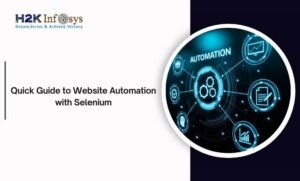













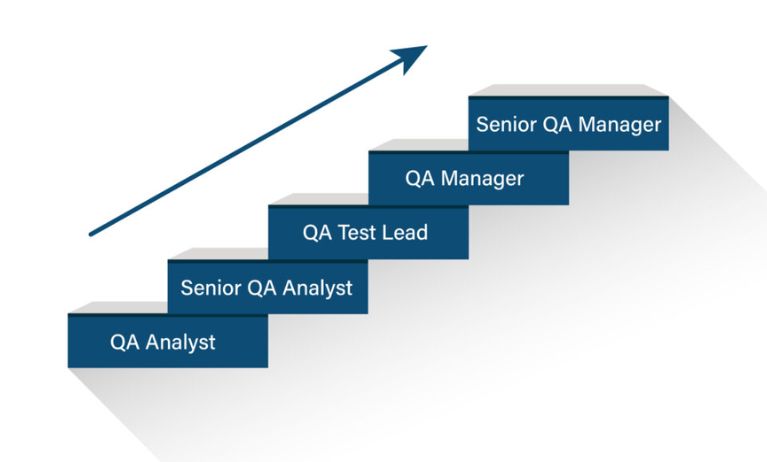

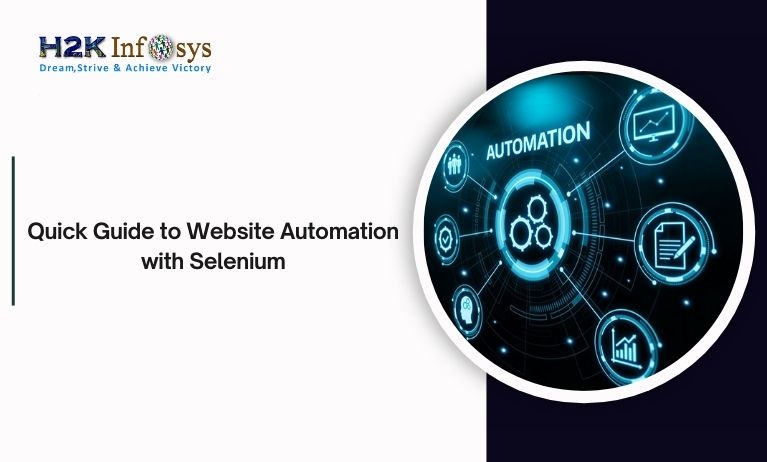


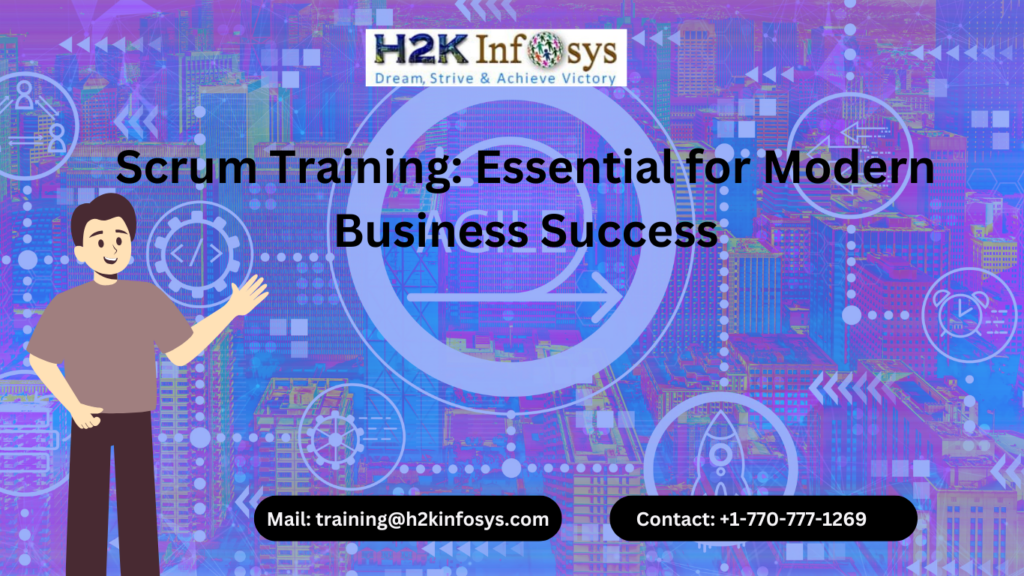
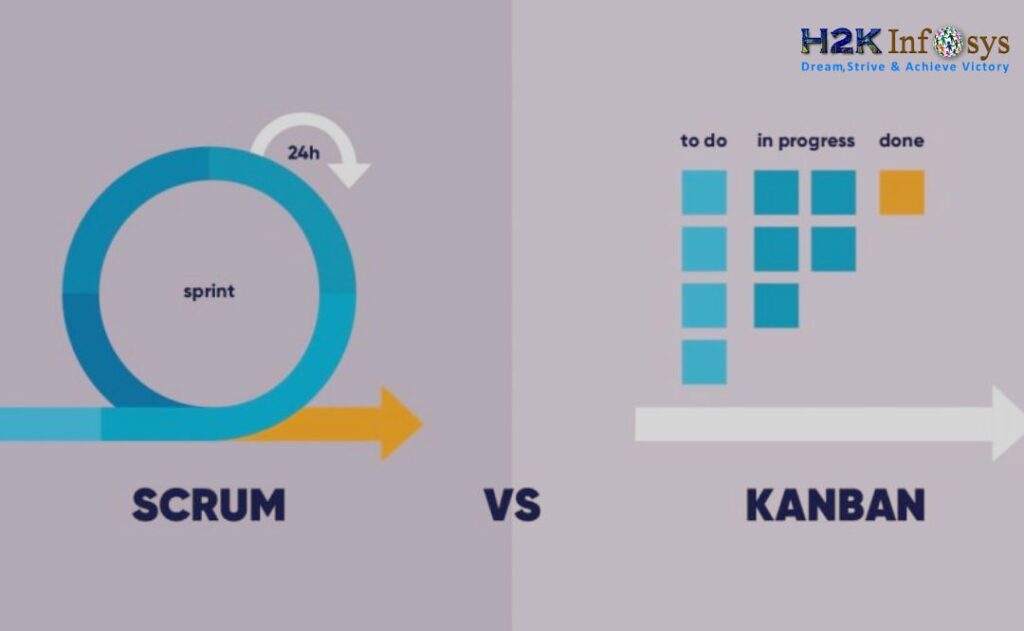



4 Responses